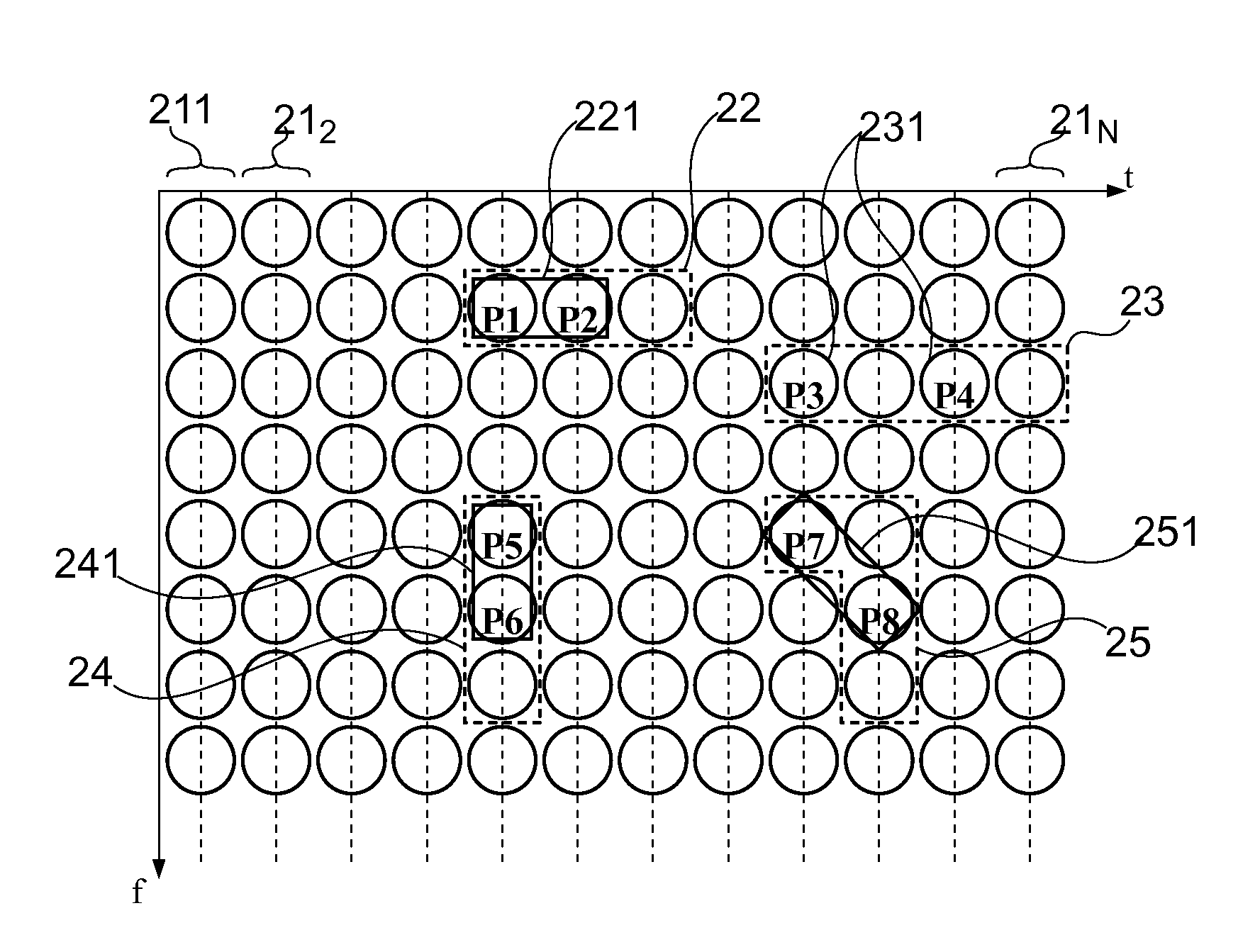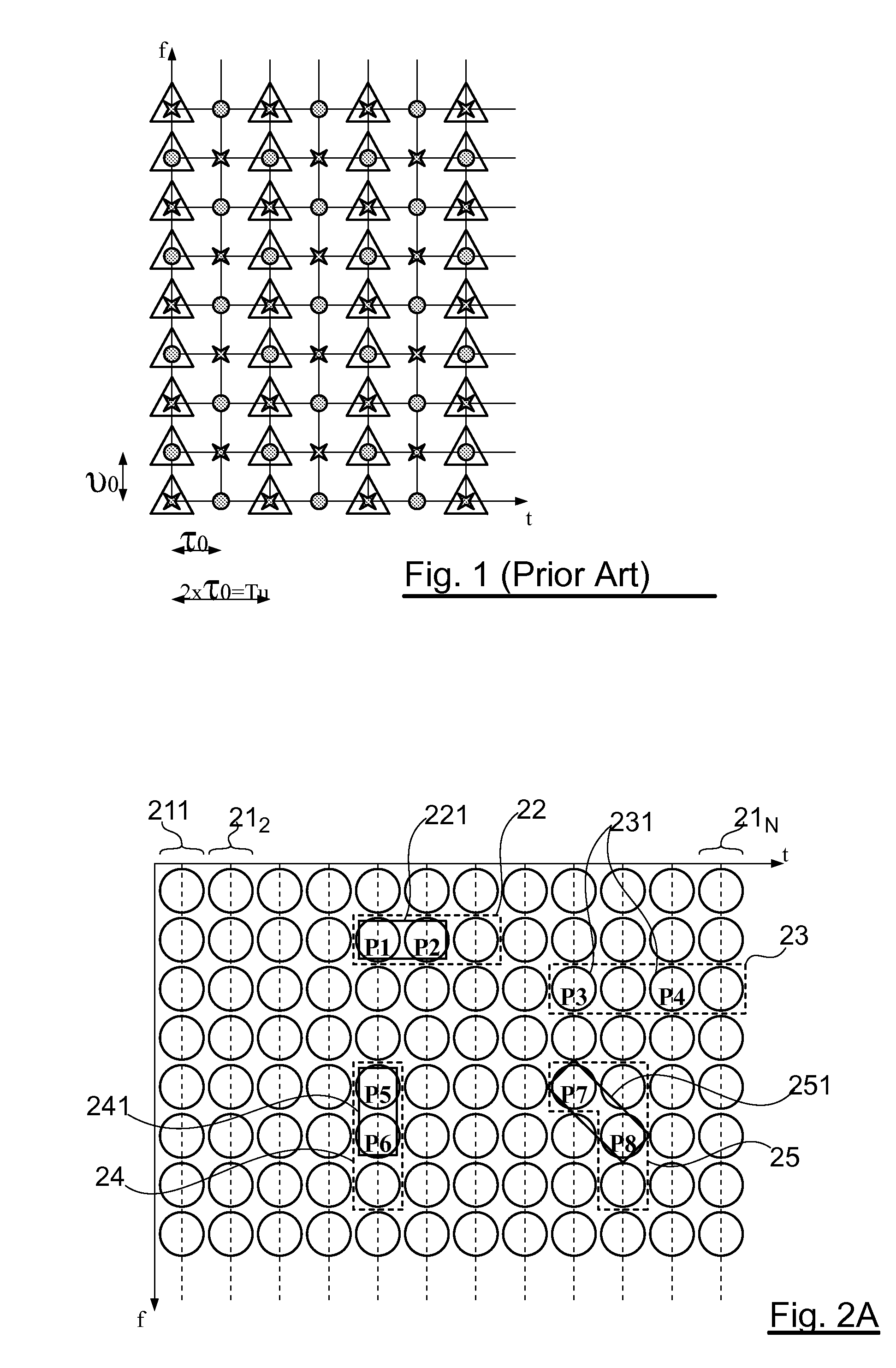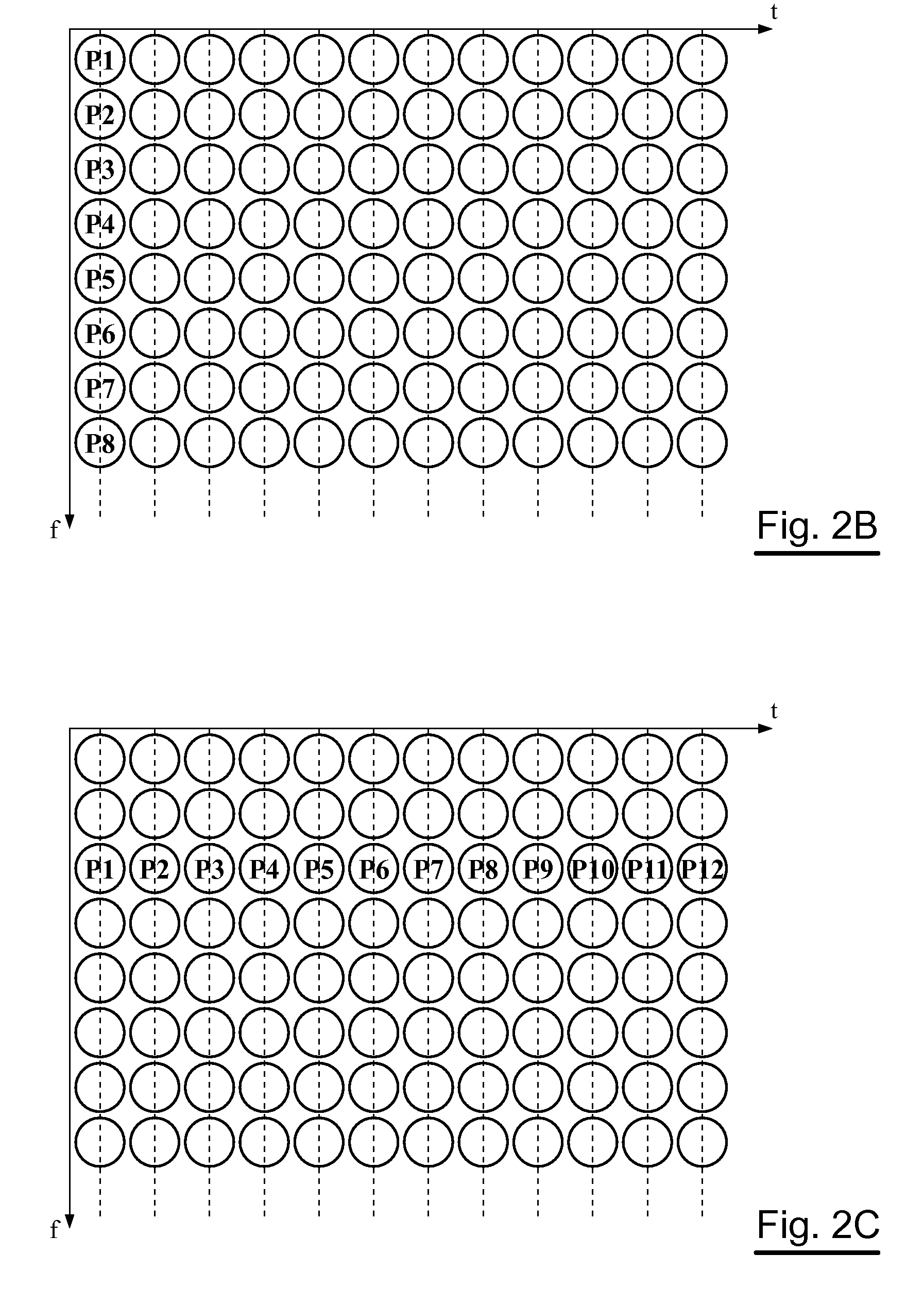Methods for transmitting and receiving a multicarrier signal, carrying out a channel estimation, and corresponding devices and computer program products
a multi-carrier signal and channel estimation technology, applied in multiplex communication, orthogonal multiplex, frequency-division multiplex, etc., can solve the problems of bfdm/oqam (or ofdm/oqam) type modulation techniques, poor frequency location of therectangular shaping of the signal made by the modulator, and the condition of biorthogonality
- Summary
- Abstract
- Description
- Claims
- Application Information
AI Technical Summary
Benefits of technology
Problems solved by technology
Method used
Image
Examples
Embodiment Construction
1. Description of One Embodiment of the Invention
[0149]The general principle of an embodiment of the invention relies on the taking into account of at least one group of pilots in a multicarrier signal implementing real-value informative data elements so as to obtain an estimation of the transmission channel between a sender and a receiver, at reception.
[0150]More specifically, the invention, in one particular embodiment, relies on the fact that each group of pilots is located in a region known as a neighborhood region in which the transmission channel is deemed to be appreciably constant.
[0151]Thus, the estimation of the transmission channel in this embodiment is obtained for said neighborhood region.
[0152]A description is provided here below of a particular embodiment of the invention implemented in the context of an OFDM / OQAM type multicarrier modulation.
[0153]On the sending side, one or more groups of pilots are inserted into the multicarrier signal, at least one of the groups c...
PUM
 Login to View More
Login to View More Abstract
Description
Claims
Application Information
 Login to View More
Login to View More - R&D
- Intellectual Property
- Life Sciences
- Materials
- Tech Scout
- Unparalleled Data Quality
- Higher Quality Content
- 60% Fewer Hallucinations
Browse by: Latest US Patents, China's latest patents, Technical Efficacy Thesaurus, Application Domain, Technology Topic, Popular Technical Reports.
© 2025 PatSnap. All rights reserved.Legal|Privacy policy|Modern Slavery Act Transparency Statement|Sitemap|About US| Contact US: help@patsnap.com



